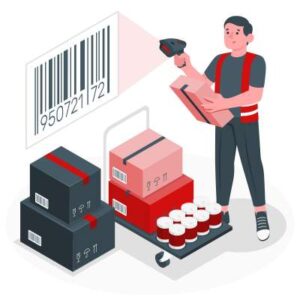Fixed Asset Tagging
Fixed asset tagging or asset tagging usually refers to affixing an identification tag on an asset belonging to an organization. Companies keep a record of all their assets in the form of fixed asset register. These asset tags could be made of different material depending on the environment under which assets are usually kept in, nature of assets, purpose of the tags on the assets etc.
It is common to see companies using excel spreadsheets to manage their fixed assets. This is where we come in.
Why Fixed Assets Tagging
Better asset management is a key to accurate financial reporting and correct fair valuation. We can help companies with construction of fixed asset register to Asset Tagging, Verification, Componenetization and Valuations.
Volition has been working with property management companies, retail chains, QSRs, manufacturing industries & ITES. Assisting them with efficient management of assets, like building assets - AHUs, chillers, pumps to plant machinery, furniture fixture, laptops, servers, PACs, IT equipment and all other kinds of fixed assets.

Managed Fixed Asset Tagging Services
Asset tagging starts with an asset register, which includes details of the assets. Method of implementation, tagging technology (barcode/qr coding/ rfid/ nfc), type of tagging materials (paper/polyester/aluminum/steel/UDV/poly carbonate), labels for tagging and duration of tagging vary for each client.
Contact us, to know, why asset tagging is required for your business and how we can help.
Asset Tagging Technologies
Technologies in Brief
Technology can help you leverage on the information, scanning method, speed, accuracy and various other factors.
Barcoding of fixed assets
Barcodes became commercially successful when they were used to automate supermarket checkout systems, a task for which they have become almost universal. They now find use in fixed asset management and inventory management.
QR Coding of fixed assets
Works best for retail industry, hospital chains, hospitality business like restaurants etc. QR code (abbreviated from Quick Response Code) is the trademark for a type of matrix barcode (or two-dimensional barcode) first designed in 1994 for the automotive industry in Japan.
NFC tagging
Near Field Communication (NFC) is a short-range wireless connectivity standard that uses magnetic field induction to enable communication between devices when they are touched together, or brought within a few centimetres of each other. The standard specifies a way for the devices to establish a peer-to-peer (P2P) network to exchange data.
Geo tagging
Geo-tagging can help users find a wide variety of location-specific information from a device. It provides users the location of the content of a given asset. Indian companies now have to geo-tag their registered offices in statutory filings with the Registrar of Companies, a move that will help identify shell companies from the same premises. Read more...
RFID tagging
Radio-frequency identification (RFID) uses electromagnetic fields to automatically identify and track tags attached to objects. The system comprises of 2 components - tags and readers. The reader is a device that has one or more antennas that emit radio waves and receive signals back from the RFID tag.
